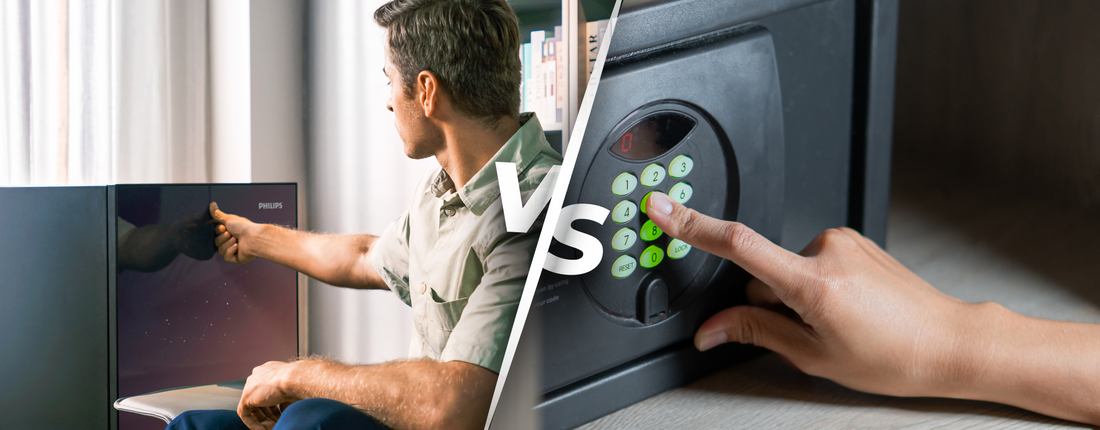
Smart Safes vs. Traditional Safes: Which is Right for You?
Share
In today's world, security is a top priority for both homes and businesses. When it comes to protecting valuables, important documents, and firearms, safes have long been the go-to solution.
But with the rise of technology, a new breed of safes has emerged: smart safes. These innovative devices offer a range of features that traditional safes simply can't match. But how do you know which type of safe is right for you?
In this blog post, we'll explore the key differences between smart safes and traditional safes to help you make an informed decision.

Traditional Safes: Tried and True, But Limited
Traditional safes have been around for centuries, and they've earned their reputation for reliability and durability. They typically consist of a sturdy metal box with a locking mechanism, such as a combination lock or a key lock. These safes are designed to provide physical protection against theft and fire damage.
Pros:
- Simplicity: Traditional safes are straightforward to use and require no technical expertise.
- Affordability: Generally, traditional safes are less expensive than smart safes.
- Durability: Often built with robust materials, they offer excellent physical protection.
Cons:
- Limited Access: Access is restricted to those with the key or combination, which can be inconvenient if you need to grant access to others or if you lose or forget the key or combination.
- Vulnerability: Traditional locks can be susceptible to picking or forced entry, and there's no way to know if someone has attempted to tamper with your safe.
- No Remote Monitoring: They lack features like remote access and alerts, so you can't monitor your safe or receive notifications if something is wrong.

Smart Safes: The Future of Security is Here
Smart safes take security to the next level by incorporating advanced technology into their design. They offer features like biometric authentication, remote access, and tamper alerts, providing a more comprehensive and convenient security solution.
Pros:
- Enhanced Security: Biometric locks (fingerprint or facial recognition) and tamper alerts provide added layers of protection, making it much more difficult for unauthorized individuals to access your valuables.
- Convenience: Remote access allows you to control and monitor your safe from anywhere, using your smartphone or computer. You can check the status of your safe, receive notifications, and even grant access to others remotely.
- Advanced Features: Smart safes offer features like audit trails, duress codes (a secondary code that can be used to open the safe and send a silent alarm), and integration with other smart home devices.
- Improved Monitoring: You can receive real-time notifications and track access history, so you'll always know who has accessed your safe and when.
- Fire Protection: Don't think smart safes compromise on fire safety! For example, the Philips 5000 series offered on MySmartSafes.com.au is fire-rated, providing protection for your valuables in case of a fire.
Cons:
- Higher Cost: Smart safes typically come with a higher price tag than traditional safes, but the added security and convenience are often worth the investment.

Making the Right Choice
Ultimately, the best type of safe for you depends on your individual needs and priorities. However, with their advanced security features, convenience, and remote monitoring capabilities, smart safes offer a level of protection and peace of mind that traditional safes simply can't match.
Invest in a smart safe today and experience the future of security!